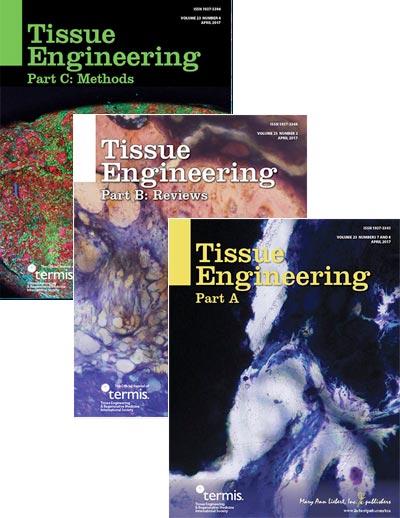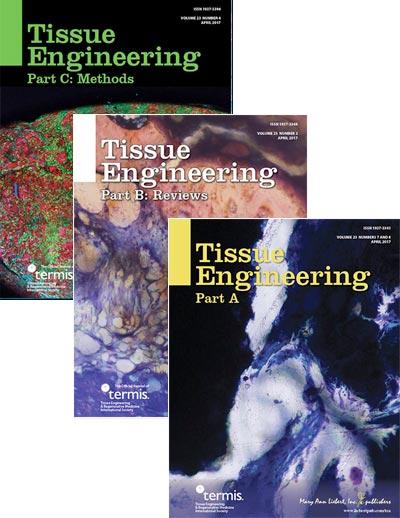
Credit: © 2017, Mary Ann Liebert, Inc., publishers
New Rochelle, NY, May 1, 2017–Researchers have developed a new model to analyze tissue engineered cartilage that allows for the use of a single method to assess functional tissue mechanics in cartilage constructs at all stages of development from the laboratory through large animal testing. This unified approach to soft-tissue modeling, which provides a valuable framework for comparing data across different testing methods and for standardizing mechanical outcomes reporting, is presented in an article in Tissue Engineering, Part A, a peer-reviewed journal from Mary Ann Liebert, Inc., publishers. The article is available free on the Tissue Engineering website until June 1, 2017.
Gregory Meloni, Robert Mauck, PhD, and coauthors from the Perelman School of Medicine, University of Pennsylvania, Philadelphia VA Medical Center, University of Pennsylvania (Philadelphia), North Carolina State University (Raleigh), University of North Carolina-Chapel Hill, and AO Foundation (Davos, Switzerland), developed a finite element (FE) model based on the NIH-sponsored freeware FEBio that combines the unconfined compression and indentation testing methods commonly used to evaluate the mechanical properties of tissue engineered cartilage developed to treat osteoarthritis.
In the article entitled "Biphasic Finite Element Modeling Reconciles Mechanical Properties of Tissue Engineered Cartilage Constructs Across Testing Platforms," the researchers showed that the measurements of changes in material properties during the maturation of engineered cartilage tissue obtained using an FE model significantly correlated with traditional outcomes measures.
"The capacity to accurately measure cartilage tissue properties at all stages of development enables cause and effect relationships to be established more accurately, ultimately supporting successful tissue growth," says Tissue Engineering Co-Editor-in-Chief Peter C. Johnson, MD, Principal, MedSurgPI, LLC and President and CEO, Scintellix, LLC, Raleigh, NC.
###
About the Journal
Tissue Engineering is an authoritative peer-reviewed journal published monthly online and in print in three parts: Part A, the flagship journal published 24 times per year; Part B: Reviews, published bimonthly, and Part C: Methods, published 12 times per year. Led by Co-Editors-In-Chief Antonios G. Mikos, PhD, Louis Calder Professor at Rice University, Houston, TX, and Peter C. Johnson, MD, Principal, MedSurgPI, LLC and President and CEO, Scintellix, LLC, Raleigh, NC, the Journal brings together scientific and medical experts in the fields of biomedical engineering, material science, molecular and cellular biology, and genetic engineering. Tissue Engineering is the official journal of the Tissue Engineering & Regenerative Medicine International Society (TERMIS). Complete tables of content and a sample issue may be viewed online at the Tissue Engineering website (http://www.liebertpub.com/ten).
About the Publisher
Mary Ann Liebert, Inc., publishers is a privately held, fully integrated media company known for establishing authoritative peer-reviewed journals in many promising areas of science and biomedical research, including Stem Cells and Development, Human Gene Therapy, and Advances in Wound Care. Its biotechnology trade magazine, GEN (Genetic Engineering & Biotechnology News), was the first in its field and is today the industry's most widely read publication worldwide. A complete list of the firm's 80 journals, books, and newsmagazines is available on the Mary Ann Liebert, Inc., publishers website (http://www.liebertpub.com).
Media Contact
Kathryn Ryan
[email protected]
914-740-2100
@LiebertPub
http://www.liebertpub.com
############
Story Source: Materials provided by Scienmag





